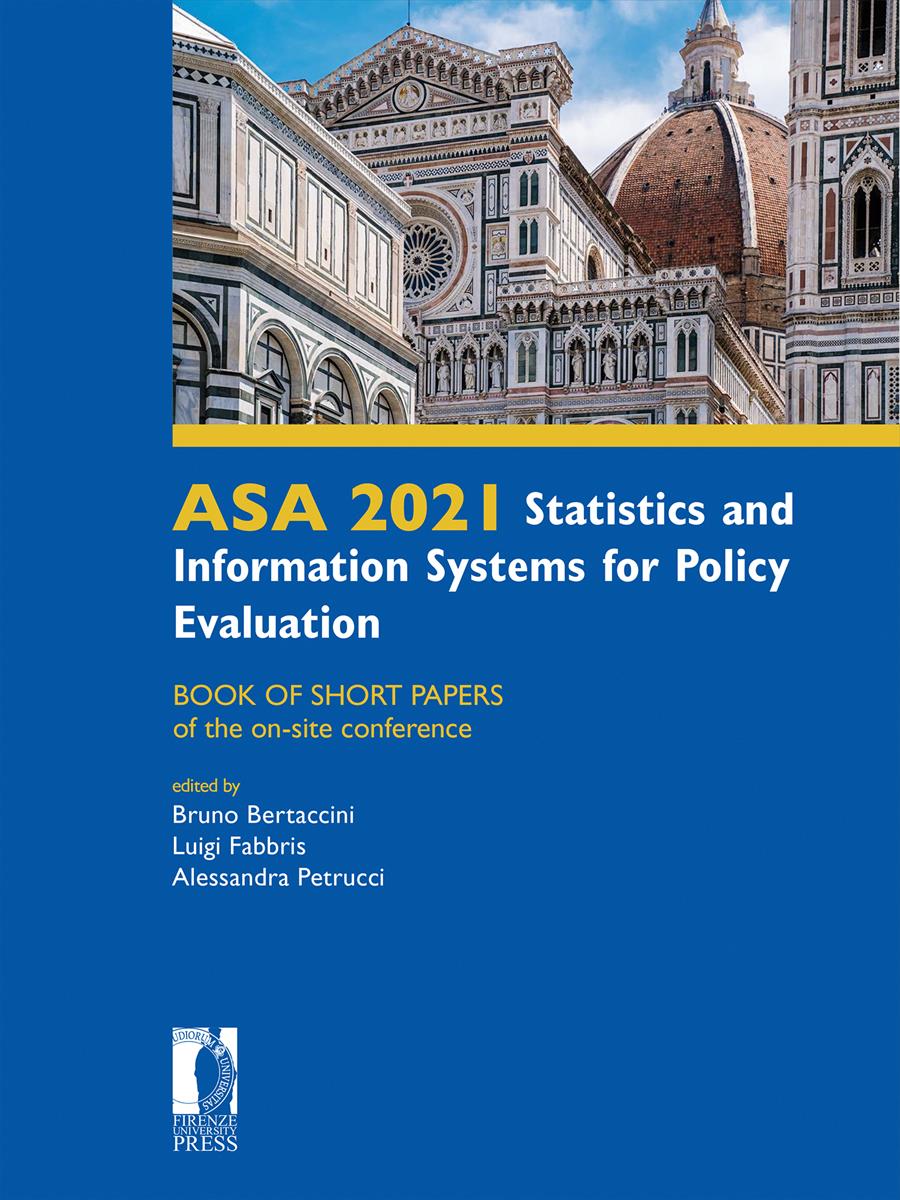- ASA 2021 Statistics and Information Systems for Policy Evaluation
- Edited by Bruno Bertaccini, Luigi Fabbris, Alessandra Petrucci
Clustering students according to their proficiency: a comparison between different approaches based on item response theory models
- Rosa Fabbricatore
- Francesco Palumbo
- © 2021 Author(s) |
- CC BY 4.0
- DOI: 10.36253/978-88-5518-461-8.09
Evaluating learners' competencies is a crucial concern in education, and home and classroom structured tests represent an effective assessment tool. Structured tests consist of sets of items that can refer to several abilities or more than one topic. Several statistical approaches allow evaluating students considering the items in a multidimensional way, accounting for their structure. According to the evaluation's ending aim, the assessment process assigns a final grade to each student or clusters students in homogeneous groups according to their level of mastery and ability. The latter represents a helpful tool for developing tailored recommendations and remediations for each group. At this aim, latent class models represent a reference. In the item response theory (IRT) paradigm, the multidimensional latent class IRT models, releasing both the traditional constraints of unidimensionality and continuous nature of the latent trait, allow to detect sub-populations of homogeneous students according to their proficiency level also accounting for the multidimensional nature of their ability. Moreover, the semi-parametric formulation leads to several advantages in practice: It avoids normality assumptions that may not hold and reduces the computation demanding. This study compares the results of the multidimensional latent class IRT models with those obtained by a two-step procedure, which consists of firstly modeling a multidimensional IRT model to estimate students' ability and then applying a clustering algorithm to classify students accordingly. Regarding the latter, parametric and non-parametric approaches were considered. Data refer to the admission test for the degree course in psychology exploited in 2014 at the University of Naples Federico II. Students involved were N=944, and their ability dimensions were defined according to the domains assessed by the entrance exam, namely Humanities, Reading and Comprehension, Mathematics, Science, and English. In particular, a multidimensional two-parameter logistic IRT model for dichotomously-scored items was considered for students' ability estimation.
- Keywords:
- Educational testing,
- Students' proficiency,
- Cluster analysis,
- Multidimensional latent class IRT models,
University of Naples Federico II, Italy - ORCID: 0000-0002-4056-4375
University of Naples Federico II, Italy - ORCID: 0000-0002-9027-5053
- Bartolucci, F., Bacci, S., Gnaldi, M. (2014). MultiLCIRT: An R package for multidimensional latent class item response models. Computational Statistics & Data Analysis, 71, pp. 971–985.
- Bartolucci, F., Bacci, S., Gnaldi, M. (2019). Statistical analysis of questionnaires: A unified approach based on R and Stata. Chapman and Hall/CRC, London, (UK).
- Chalmers, R.P. (2012). mirt: A multidimensional item response theory package for the R environment. Journal of statistical Software, 48(6), pp. 1–29.
- Cutler, A., Breiman, L. (1994). Archetypal analysis. Technometrics, 36(4), pp. 338–347.
- Davino, C., Fabbricatore, R., Pacella, D., Vistocco, D., Palumbo, F. (2020). Aleas: a tutoring system for teaching and assessing statistical knowledge, in Proceedings of the Second Symposium on Psychology-Based Technologies, eds. O. Gigliotta and M. Ponticorvo, CEUR Workshop Proceedings, 2730.
- Dempster, A.P., Laird, N.M., Rubin, D.B. (1977). Maximum likelihood from incomplete data via the EM algorithm. Journal of the Royal Statistical Society: Series B (Methodological), 39(1), pp. 1–22.
- Eugster M.J.A., Leisch, F. (2009). From Spider-Man to Hero – Archetypal Analysis in R. Journal of Statistical Software, 30(8), pp. 1–23.
- Fabbricatore, R., Parola, A., Pepicelli, G., Palumbo, F. (2021). A latent class approach for advising in learning statistics: implementation in the ALEAS system, in Proceedings of the First Workshop on Technology Enhanced Learning Environments for Blended Education - The Italian e-Learning Conference 2021, eds. P. Limone and R. Di Fuccio, CEURWorkshop Proceedings, 2817.
- Hubert, L., Arabie, P. (1985). Comparing partitions. Journal of classification, 2(1), pp. 193–218.
- MacQueen, J. (1967). Some methods for classification and analysis of multivariate observations, in Proceedings of the fifth Berkeley symposium on mathematical statistics and probability, eds. L. Lecam and J. Neyman, Cambridge University Press, Oakland, (CA), pp. 281–297.
- McLachlan, G.J., Peel, D. (2000). Finite mixture models. Wiley-Interscience, New York, (NY).
- Schwarz, G. (1978). Estimating the dimension of a model. Annals of statistics, 6(2), pp. 461–464.
- Scrucca, L., Fop, M., Murphy, T.B., Raftery, A.E. (2016). mclust 5: clustering, classification and density estimation using Gaussian finite mixture models. The R journal, 8(1), pp. 289–317.
Chapter Information
Chapter Title
Clustering students according to their proficiency: a comparison between different approaches based on item response theory models
Authors
Rosa Fabbricatore, Francesco Palumbo
Language
English
DOI
10.36253/978-88-5518-461-8.09
Peer Reviewed
Publication Year
2021
Copyright Information
© 2021 Author(s)
Content License
Metadata License
Bibliographic Information
Book Title
ASA 2021 Statistics and Information Systems for Policy Evaluation
Book Subtitle
BOOK OF SHORT PAPERS of the on-site conference
Editors
Bruno Bertaccini, Luigi Fabbris, Alessandra Petrucci
Peer Reviewed
Publication Year
2021
Copyright Information
© 2021 Author(s)
Content License
Metadata License
Publisher Name
Firenze University Press
DOI
10.36253/978-88-5518-461-8
eISBN (pdf)
978-88-5518-461-8
eISBN (xml)
978-88-5518-462-5
Series Title
Proceedings e report
Series ISSN
2704-601X
Series E-ISSN
2704-5846
